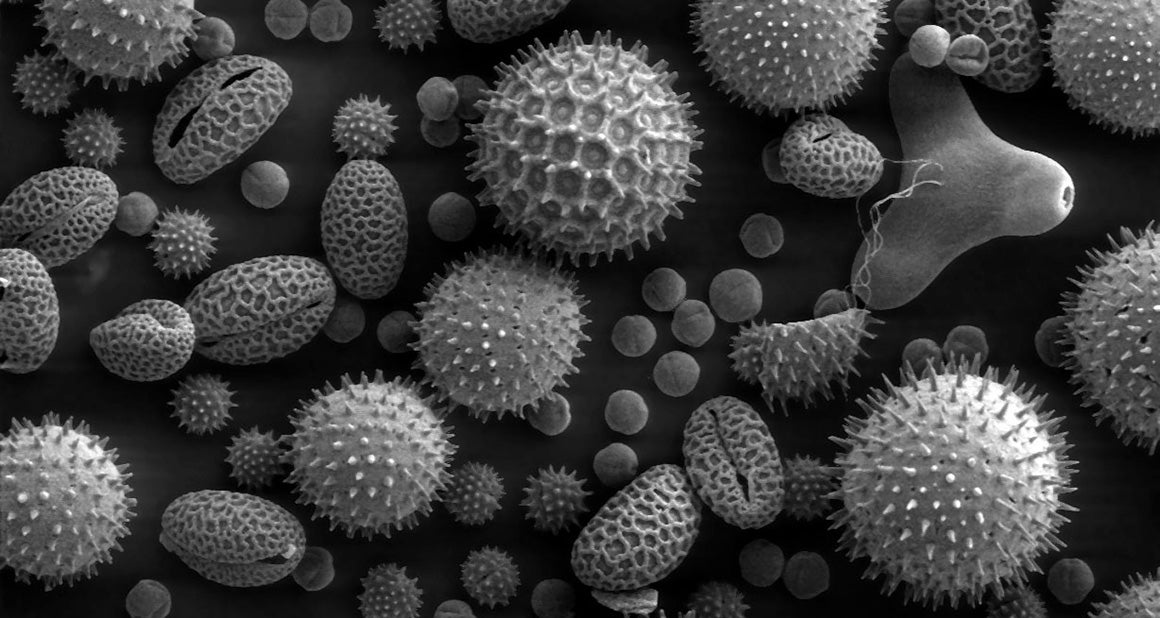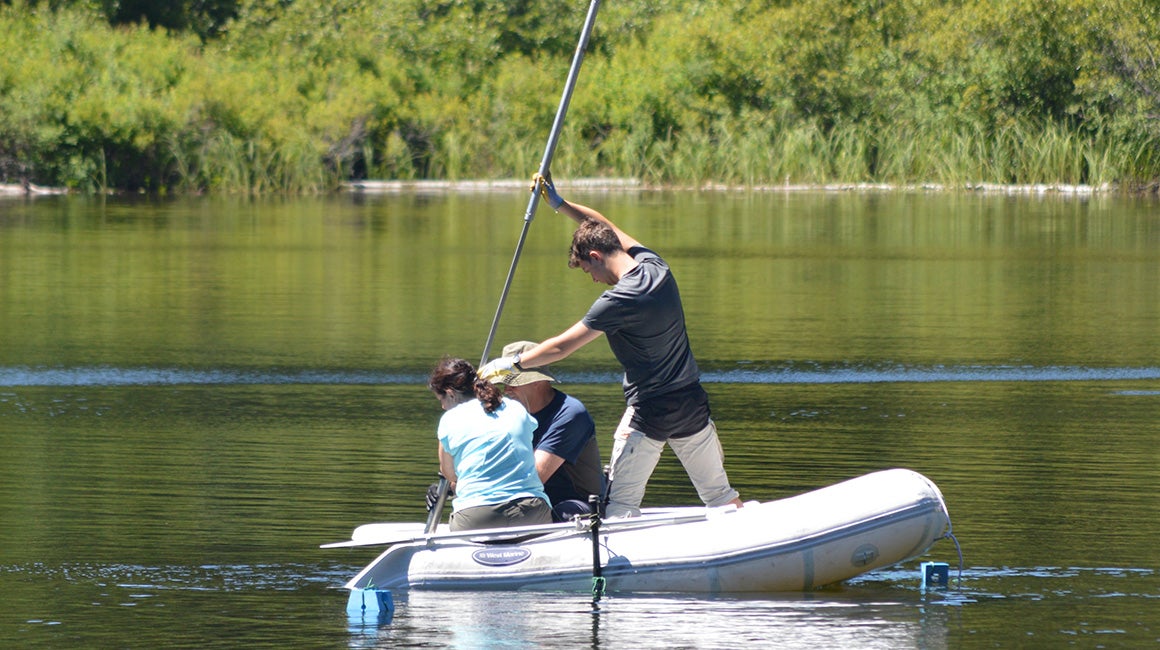Pollen: More Than Just an Allergen
Spruce trees grow best in the chilly climate of a place like Alaska. Coconut palms thrive in the heat and humidity of a place like Panama.
Plants that have specific requirements for temperature and moisture can tell us about the climate of the region where they are found. As climates change over time, so do the plant species that are able to grow in a specific place. Knowing what plants used to be able to grow in a place can tell us what the climate was like in the past.
Past climates can be preserved in pollen.
Plants release large amounts of pollen and these little grains are incredibly tough and hardy. It is difficult to destroy a pollen grain. They are not easily crushed, even by rocks, and they don’t often dissolve. Because there is a lot of pollen and it doesn’t fall apart easily, it is often preserved in layers of sediments and can become fossilized within rocks – even in places where other plants and animals are not likely to be preserved as fossils. This makes pollen a good source of data about past climates.
When viewed with a microscope, pollen grains from different plant species look different. This means that the pollen grains can be used to identify plant species that were living in a region.

Plant species can be identified from the shape of their pollen. How many different types of pollen grains do you see in this photograph from under a scanning electron microscope? Each shape is from a different species of plant.
Credit: Wikipedia
Paleobotanists – paleontologists who specialize in ancient plants – have far more fossilized pollen to study than fossilized plants. Whenever possible, they try to correlate pollen records with the fossil leaves, trunks, seeds or pinecones found nearby to confirm that the plants were in the area. Counts of ancient pollen tell us both the types of plants that grew in an area and the relative abundance of each plant species.
Fossil pollen has been used to interpret the climate record from the past few million years because the pollen grains are from plants related directly to modern plant species, and we know the climate conditions of modern plants. Further back in geologic time, there are more unknowns about how pollen grains relate to specific types of plants and the climate conditions that those plants lived within.
Ancient pollen is often found in lake sediments.
While pollen can be found in ice cores and seafloor sediments, the most common place to find ancient pollen is in sediment from the bottom of lakes. Pollen washes into lakes from streams or is carried by the wind and then settles into the lake water. The pollen accumulates in the layered sediments on lake beds. Lake sediments often have annual layers. Pollen extracted from core samples of lake sediments are an important paleoclimate proxy.
To collect the ancient pollen from the bottom of a lake, scientists use a long tube, often 5 centimeters (cm) in diameter, to extract a long core of the sediment. The cores can be 10 meters long or longer, depending upon the age of the lake and amount of sediment that's been deposited. The core is sampled every 10 to 20 cm and washed in solutions of strong, corrosive chemicals such as potassium hydroxide, hydrochloric acid, and hydrogen fluoride. These chemicals remove all of the organic and mineral particles in the sample except for the pollen. Microscope slides are made of the pollen so that the grains can be identified and counted.
Because every plant species has a distinctive pollen shape, botanists can identify which plant the pollen came from. Through pollen analysis, botanists can estimate the composition of a lake area by comparing the relative amount of pollen each species contributes to the whole pollen sample. Carbon dating of the lake sediment cores gives an approximate age of the sample.

These scientists are taking a core of the sediments at the bottom of a lake in Washington state using a long coring tool.
Credit: USDA Forest Service